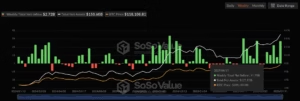In a surprising move that has caught the attention of the cryptocurrency community, John Patrick Mullin, co-founder and CEO of Mantra, has pledged to burn his team’s OM tokens after an extraordinary crash of 90% over the weekend. This drastic decision highlights the challenges faced by the cryptocurrency market and the actions leaders are willing to take in response to volatile conditions.
On Sunday, OM crypto token witnessed one of the steepest declines in recent history, plunging sharply and creating panic among investors and traders alike. The rapid decline in value not only affected the investors’ confidence but also prompted Mullin to act decisively to rectify the situation. In a statement, he expressed his commitment to the project and the community, emphasizing that fixing the issues at hand is a top priority.
Coinciding with this event, the broader cryptocurrency market has been experiencing significant downturns, with major cryptocurrencies also facing price reductions. For instance, Bitcoin (BTC) is currently priced at $83,834.00, down by 2.10%, while Ethereum (ETH) stands at $1,578.39, down by 3.55%. These shifts have instigated discussions surrounding market sustainability and the impact of leadership decisions in turbulent times.
What does this mean for the future of Mantra and its community? By burning a portion of the OM tokens, Mullin aims to instill confidence and integrity within the project. This token burn can be viewed as a way to reduce supply, which, in theory, could help stabilize or increase the coin’s value in the long term. However, the effectiveness of this action remains to be seen, as the cryptocurrency space is notorious for its unpredictability.
In summary, the commitment demonstrated by John Patrick Mullin to burn team tokens amid the 90% crash signals a significant moment for both Mantra and the wider cryptocurrency landscape. As enthusiasts and investors watch closely, it remains essential to evaluate the long-term implications of such decisions on cryptocurrency projects and their respective communities.







